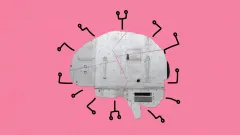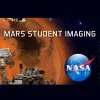Take a look inside 5 images
Mars Student Imaging Project
Pros: This complete package of curriculum, resources, and professionals to support your class’s science and space learning goals.
Cons: Teachers new to the program should brace themselves for a serious learning curve: Implementation can be weeks-long.
Bottom Line: One of the best authentic inquiry space experiences out there: Use this tool to grow the next generation of researchers in your classroom.
The great thing about MSIP is that it’s ready for you, right down to the lesson calendar and teacher tips (use colored markers on the Martian maps). Ideally, your initial implementation could focus on a group of advanced middle school or high school kids in a science elective class: think Science Investigations or Astronomy. If that’s (more likely) not an option, you may want to start with just one group of motivated kids and expand from there after you’ve run through the program once. Depending on your current approach, you may find MSIP’s discussion and argument-based lessons familiar or foreign; rationales in the teacher guides help set the stage.
Most teachers will find the Distance Learning option is the best way to engage kids in inquiry practices without transporting them to Arizona. If you do choose to participate on-site, plan ahead to allow time for fundraising or financing. Also, don’t ignore the curricular materials in the Independent Research section; there’s a lot there to support student learning.
The Mars Student Imaging Project (MSIP) is an online curriculum that emphasizes scientific processes and planetary science to get kids engaged in the imaging work of NASA scientists. Kids can use it to make a proposal to NASA’s team, requesting that the THEMIS camera (onboard the Mars orbiter) take a specific picture of Mars. Definitely an educational tool, MSIP has a citizen science component in that data collected for student projects becomes part of NASA’s database.
The MSIP site displays project steps through a horizontal menu bar with 7 hexagonal buttons. Step 2 offers a comparison table of the three curriculum formats. Classrooms can travel on-site to work with a NASA team (they're based in Arizona, if your class is conveniently nearby), meet virtually (via the Distance Learning option), or tap into curriculum without collecting new data (Independent Research). Notice that this site is housed in NASA’s larger Mars Exploration site, so Home at the top takes you to other Mars info rather than to the MSIP home page.
MSIP’s curriculum (see hexagon 4) superbly addresses scientific practices. Kids make observations, take measurements, and develop testable questions with alternative hypotheses. They become familiar with equipment (like the THEMIS camera) and learn to interpret technical data and images. Students work to make arguments from evidence, recognizing that new data may support a different perspective. Weaved into all of this is a set of teacher supports that shore up lesson execution and any technical unsteadiness.
There are some worthwhile supplemental lessons in the Independent Research section: For example, “Mars Uncovered” has kids make a geological map of Mars and apply relative age dating techniques. Finally, connecting kids to NASA teams through the Onsite or Distance Learning formats is the kind of learning opportunity that changes lives; turn to the intro video for some affirmation and motivation.












